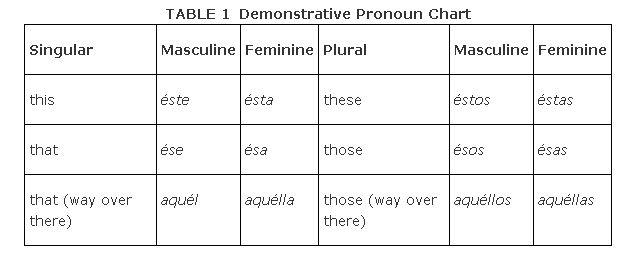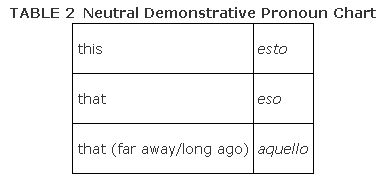Demonstrative adjectives are placed in front of a noun to indicate the proximity of the noun to the speaker. A demonstrative pronoun is basically the same as a demonstrative adjective but is used to replace a noun rather than modify it. If the noun is understood rather than stated, you must use a demonstrative pronoun rather than a demonstrative adjective. Demonstrative pronouns and demonstrative adjectives are so similar that you can't hear the difference in spoken Spanish because the only difference between them is a written accent mark to differentiate the parts of speech.
In English, it is common to say “this one” or “these ones.” Technically, the word “this” or “these” should be used alone to replace a noun, so the words “one” or “ones” are unnecessary and incorrect. In Spanish, the appropriate demonstrative pronoun is used alone to replace a noun:
- Do you need that knife? No, I can use this (one).
- ¿Necesitas ese cuchillo? No, puedo usar éste.
The demonstrative pronouns in Table 1 are exactly like demonstrative adjectives except that each has an accent.

When a demonstrative pronoun refers to an idea, a situation, or a concept, the appropriate neutral demonstrative pronoun is used. Because demonstrative pronouns do not replace a specific noun, they do not need to represent any gender and there is only one form. Notice in Table 2 that the neutral pronouns are the only demonstrative pronouns that do not have accent marks.

- La venganza; eso es el problema.
- Revenge; that is the problem.
- I don't like it (an idea, thought, issue).
|
|
|
|
|
|
|
|
|
|
|
|
|
|
|
|